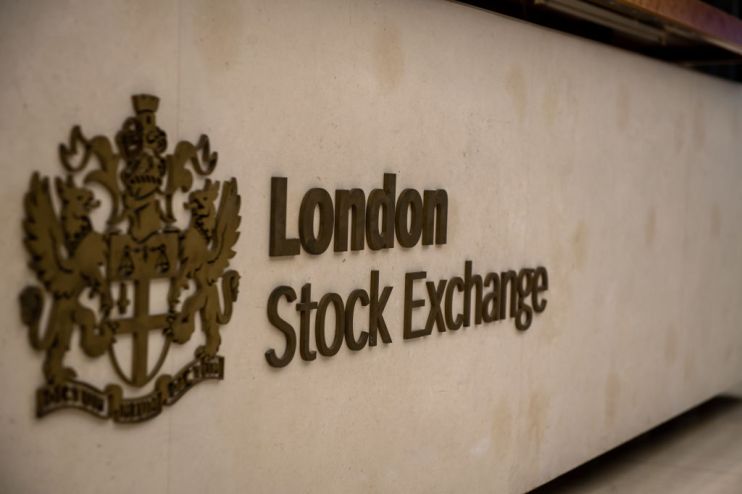As the FTSE 100 turns 40, what does the future hold for London’s leading blue-chip index?

It's currently 3:34 pm on Tuesday, January 2, 2024.
Tomorrow marks the 40th anniversary of London's FTSE 100 index, but the occasion is far from a joyous one. As it reaches its middle years, there are mounting worries about its importance in a market that is increasingly controlled by the United States.

Many things have transformed ever since the FTSE 100 began trading in 1984. Only 14 of the initial members of FTSE are currently present in the index with either the same name or a comparable one. These corporations consist of Shell, BP, and Rio Tinto. Additionally, 12 more businesses still exist in the index, but with different labels.
A lot of well-known companies have been obtained by international businesses. These consist of various popular brand names such as Cadbury, Boots, and Scottish & Newcastle Breweries. Kraft, Walgreens, and Heineken took over these companies, in that order.
Some have failed to overcome difficulties and challenges, leaving them behind in their journey.
Dalgety, a conglomerate that centered on the food industry, disposed of the majority of its holdings after it was adversely affected by the emergence of BSE, or "mad cow disease," in the 1990s. Trafalgar House, another diverse company with stakes in various domains, struggled in the aftermath of the 1990 economic decline as it underwent the burden of hefty loans. It was later acquired by Norwegian corporation Kværner.
Upon release, the latest index proved to be a significant improvement from its forerunner, the FT 30.
The forerunner of FTSE was handpicked by Financial Times writers and updated only in case of company acquisitions or bankruptcy. Every enterprise listed in the FT 30 held the same importance, making it possible for individual stock prices to significantly influence the index.
Upon its release, the SE 100 rapidly took over from the unchanging FT 30 as the primary gauge of London's market stability.
After six weeks of launching, the FTSE had to add the initials of the Financial Times (FT) due to the pressure from their leaders. The leadership team of the newspaper was angry because they were not informed about the launch of the FTSE, and replacing their own index.
The electronic list was continuously updated and its release was well timed. After a little while, Margaret Thatcher's decision to reduce regulations caused a massive growth in the financial industry and made the FTSE soar to new heights.
The FTSE 100 index increased in December 1999, reaching above 6,900 points from its initial launch at 1,000 points.
After a span of 24 years that included a financial crisis and a pandemic, there has only been a modest rise of 800 points in the FTSE 100 index, which currently stands at approximately 7,700.
Investors have been affected by this. The FTSE 100 had been achieving annualised returns of 15.9% during the 1980s and 11.1% in the 1990s. However, the annual returns have dropped significantly since the year 2000, reaching just 0.4%.
Since the year 2000, the MSCI Europe ex-UK index has only seen a growth of 2.9% in comparison to the S&P 500 which has seen a considerable growth of 6.1% in sterling terms.
"The main index of the UK has transitioned from a pleasant childhood to a stern adulthood," commented Laith Khalaf, who leads investment analysis at AJ Bell.
Khalaf observed that using annual returns alone to evaluate the FTSE's performance is not an effective approach because it does not factor in dividend payments and is affected by fluctuations in currency exchange rates.
The value of Sterling has dropped significantly compared to the US dollar and euro over the past few years. This means that investors who put money into foreign stock markets have seen their profits increase when converting back into British pounds.
If the profits from dividends are put back into investments and the earnings are figured out using currencies from the same area, the FTSE 100's earnings since 2000 are similar to those of other European competitors. Looking at it this way, the FTSE 100 has gained 4.1 percent every year since 2000, while the MSCI Europe ex-UK index has gained 3.9 percent.
The United States continues to lead, as investors receive a yearly profit of 7.1 percent from the S&P 500.
Khalaf mentioned that while it is factual that the FTSE 100 has not performed as well as the S&P 500 since the year 2000, it seems that this is mainly due to the extraordinary circumstances of the United States, rather than any sort of decline in the United Kingdom.
As the FTSE 100 hits the age of forty, it is encountering a bit of a challenging phase. Hargreaves Lansdown's head of money and markets, Susannah Streeter, observed that the index is going through a situation where its level of confidence seems to be at a low ebb.
In comparison to other markets located in the US and Europe, the FTSE 100 only had a modest gain of 3.7 percent in the year 2024. On the other hand, the German DAX gained 20 percent, and the Nasdaq index increased over 400 percent showing strong growth in those markets.
Several companies have left the UK's publicly-traded markets in the last few years. As a result, the stock exchange has experienced a shortage of Initial Public Offerings (IPOs) in 2023. Additionally, it has found it difficult to entice technology firms. Interestingly, the FTSE 100 index currently has the same number of tech companies as it did at its launch in 1984.
Multiple suggestions have been put forth to promote investment in the UK's listed markets. These consist of modifications to the regulations for listing and strategies to increase individual investment.
Supporters are optimistic that this move will inspire fresh businesses to list on the well-known index and keep it current. However, it is not certain whether the FTSE 100 will experience a positive shift in direction in 2024.









































